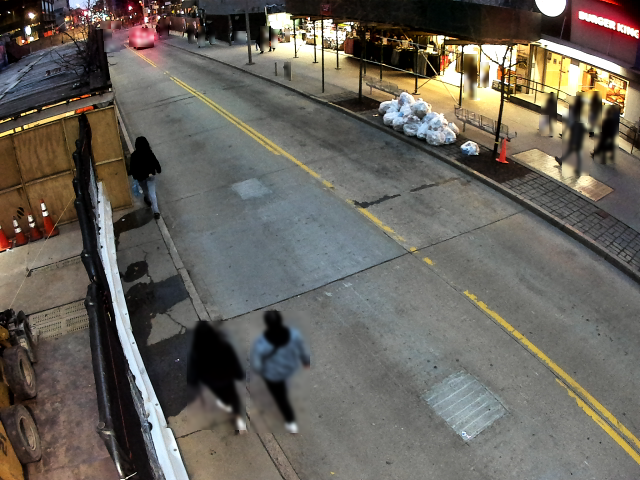"I'm walkin' in the street here!"
New York's omnipresent construction scaffolding does more than give concert promoters a place to put up their posters — it makes pedestrians more than 50 percent more likely to veer into the street, data from a local mobility company shows.
The company, Numina, quietly published its findings earlier this year, but CEO Tara Pham presented the data at an industry summit in Manhattan on Thursday, telling transportation wonks how the company's sensors on a scaffolding on Fulton Mall and Flatbush Avenue in Downtown Brooklyn showed that pedestrians were 53 percent more likely to mingle with buses, trucks and cars when the sidewalk was cut off by scaffolding.
Pham said her company did the analysis to quantify pedestrian behavior in cities.
"It's usually pedestrians and bicyclists that have been left out of planing from a data perspective," Pham told the audience of muckety mucks at a Crain's breakfast.
In a city with 332 miles of scaffolding at last count, the way the walls restricts pedestrian movements or puts them in harm's way has been a seemingly intractable problem. The amount of scaffolding in New York City has increased, from 280 total miles to over 330, since a 2017 New York Times story on city residents' frustration with scaffolding and the de Blasio administration's attempt to fight scaffold sprawl by keeping better location data. And it has even risen since Council Member Eric Ulrich wrote an editorial calling on the city to "tackle the scaffolding scourge" in April 2019.
In that editorial, Ulrich wrote that there were over 8,300 scaffolds totaling 1.45 million linear feet. As the latest numbers from the Department of Buildings show, those numbers have both increased, to 9,200 sheds totaling 1.75 million linear feet.
Pham said that the data had "huge implications" at Thursday's breakfast. In the blog post explaining the findings, Numina's Jennifer Ding suggested that the city work on things like "better signage to inform pedestrians early on of a road closure, temporary pedestrian refuges or mid-block crosswalks at busy intersections" to mitigate the effects of construction on pedestrian movement.





